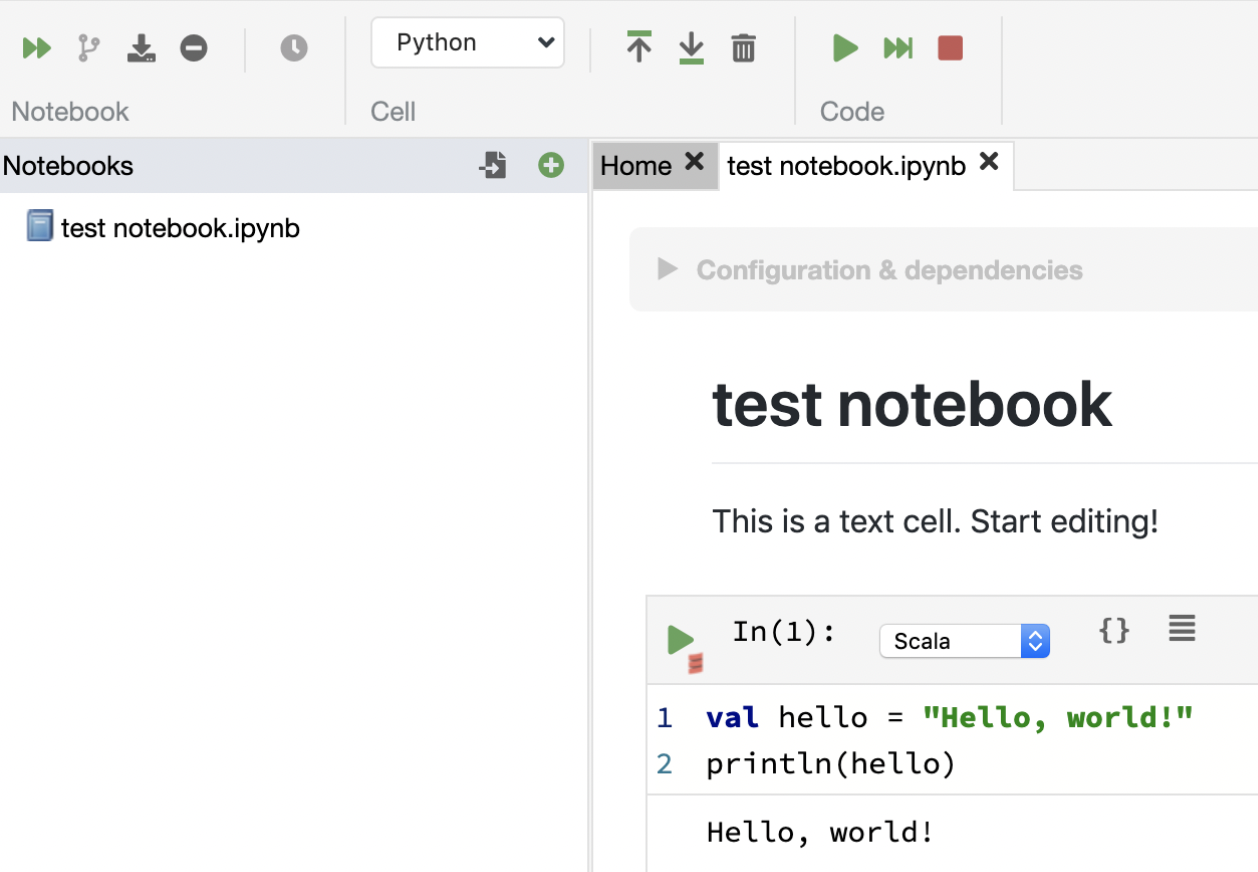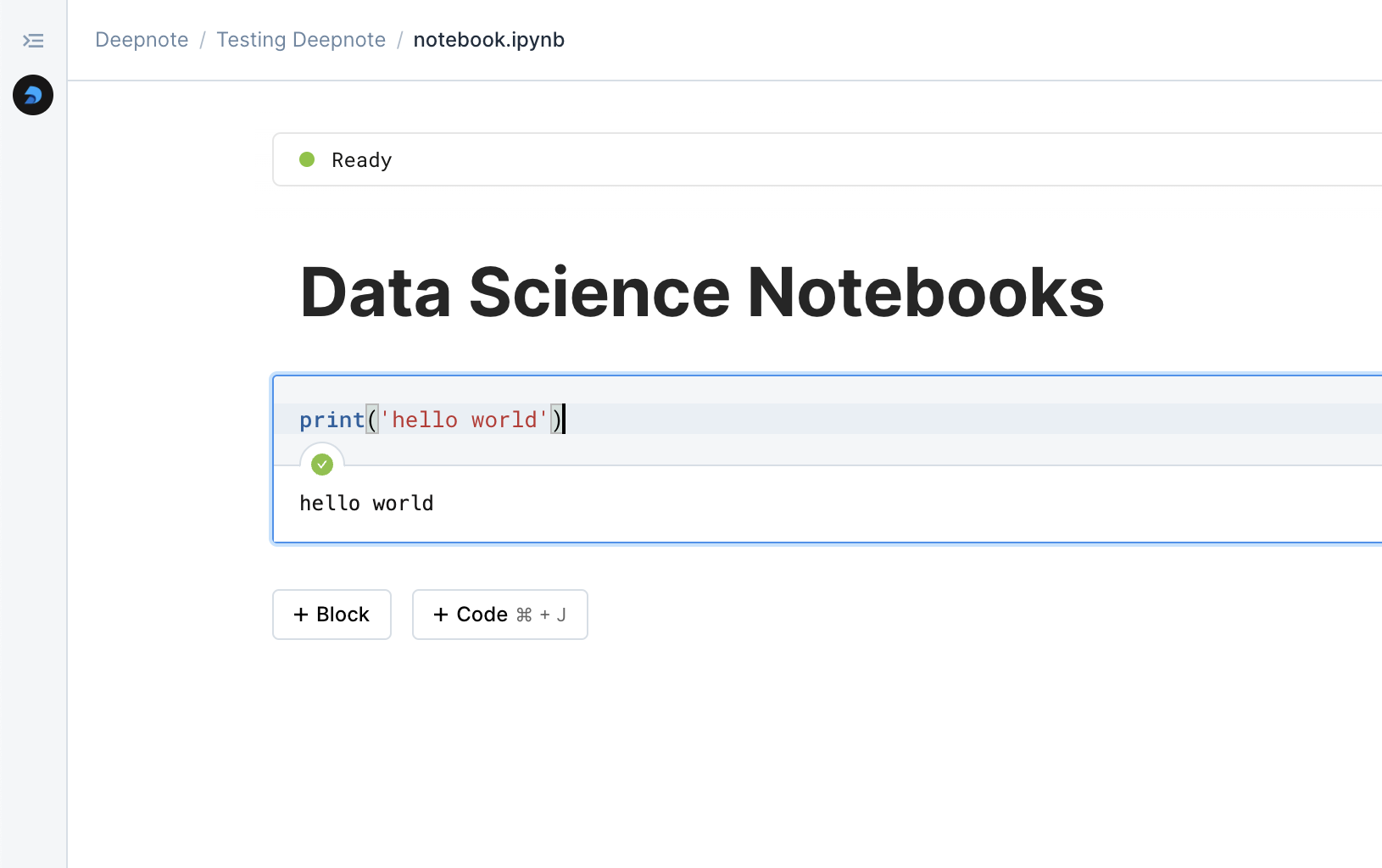

Polynote

Comparing two data science notebooks.






The evolution of computational notebooks has led to diverse approaches in handling data science workflows. Polynote, developed by Netflix, and Deepnote represent two distinct paths in this evolution, each bringing unique capabilities to address the challenges of modern data work.
Polynote emerged from Netflix's need for a more robust notebook environment, particularly focused on Scala integration and reproducible notebooks. The platform emphasizes type safety, runtime insight, and multi-language support, reflecting its origins in a sophisticated engineering environment.
Deepnote takes a cloud-first, collaborative approach to data science workflows, focusing on team productivity and seamless integration with modern data tools. The platform prioritizes accessibility while maintaining professional-grade features and real-time collaboration capabilities.
Polynote's distinguishing feature is its first-class support for Scala, alongside Python and SQL. The platform provides sophisticated type checking and runtime insights, making it particularly valuable for teams working with Scala in their data workflows. Its kernel architecture ensures true language interoperability, allowing variables to be shared seamlessly between different languages.
Deepnote offers broad language support with particular emphasis on Python and its data science ecosystem. The platform provides integrated environments for various languages while focusing on collaboration and ease of use. Its architecture supports modern data science workflows with extensive integration capabilities.
Polynote introduces innovative approaches to notebook state management. The platform maintains explicit state tracking and provides clear visibility into the notebook's execution state, helping developers understand and maintain reproducible analyses. This approach particularly benefits complex workflows involving multiple languages.
Deepnote provides a more traditional notebook execution model enhanced with modern features like real-time collaboration and integrated version control. The platform's focus on team workflows shapes its approach to code execution and state management, emphasizing clarity and collaboration.
Polynote's interface reflects its engineering-focused origins, providing detailed insights into code execution and variable states. The platform's UI emphasizes functionality and technical insight, with features particularly valuable for debugging and performance optimization.
Deepnote offers a more streamlined, modern interface designed for collaborative work. The platform's UI balances accessibility with professional features, making it approachable while maintaining the depth needed for serious data science work.
Polynote's approach to data handling emphasizes performance and type safety, with particular attention to Scala's static typing capabilities. The platform provides robust support for working with large datasets and complex data structures, reflecting its enterprise origins.
Deepnote takes a more comprehensive approach to data integration, offering native connections to various data sources and modern data tools. The platform's architecture supports both traditional and cloud-native data workflows, providing flexibility for diverse team needs.
Polynote's collaboration features focus on code quality and reproducibility. The platform's emphasis on explicit state management and type safety helps teams maintain high-quality, reproducible analyses, though its collaboration features are more traditional compared to cloud-native platforms.
Deepnote emphasizes real-time collaboration with features designed for modern team workflows. The platform enables simultaneous editing, commenting, and version control, creating an environment where teams can work together seamlessly.
Polynote finds its sweet spot in environments where:
Deepnote proves particularly valuable for:
Polynote typically runs in local or self-hosted environments, giving teams complete control over their infrastructure and security. This approach aligns well with organizations having specific security requirements or existing infrastructure investments.
Deepnote's cloud-native architecture eliminates infrastructure management concerns while providing enterprise-grade security features. The platform's approach simplifies deployment while maintaining flexibility for different organizational needs.
The decision between Polynote and Deepnote often reflects broader organizational priorities and technical requirements. Teams heavily invested in Scala or requiring sophisticated type safety features might find Polynote's approach more aligned with their needs. Its focus on reproducibility and language interoperability makes it particularly valuable for engineering-focused data teams.
Organizations prioritizing collaboration and modern workflow integration might find Deepnote more suitable. Its combination of accessibility, real-time collaboration, and professional features creates an environment well-suited to contemporary data science work.
Both platforms continue to evolve, with Polynote expanding its capabilities while maintaining its focus on type safety and reproducibility, and Deepnote enhancing its collaborative features and integration capabilities to serve modern data teams.
Polynote and Deepnote represent different approaches to solving data science workflow challenges. Polynote excels in environments where Scala integration, type safety, and reproducibility are priorities, reflecting its origins in Netflix's engineering culture. Its sophisticated language interoperability and state management features make it particularly valuable for teams working with complex, multi-language workflows.
Deepnote offers a more collaborative, cloud-native approach to data science work, emphasizing team productivity and modern integration capabilities. Its real-time collaboration features and intuitive interface make it particularly valuable for teams embracing contemporary development practices.
The choice between these platforms should align with your team's technical requirements, collaboration needs, and existing workflow patterns. Understanding these distinctions helps ensure you select the platform that best supports your data science objectives while providing the necessary tools for team success.